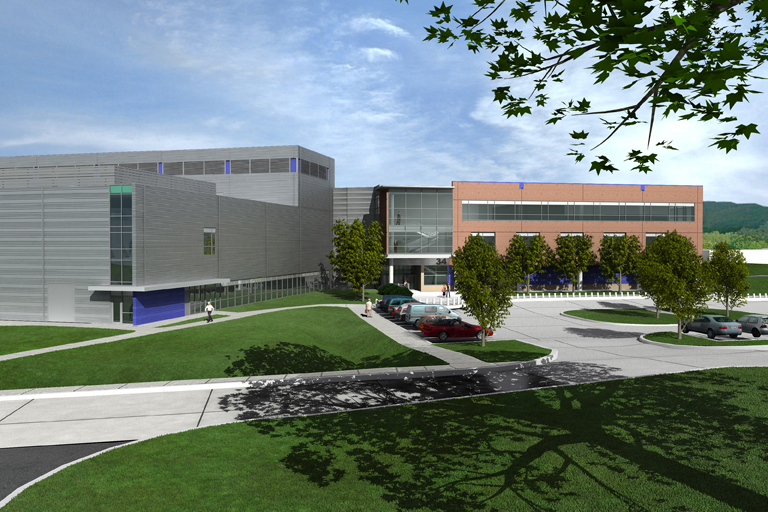
GREENBELT, Md. — What does it take to turn silver into gold? For NASA scientists, the answer is “two protons.” For Manhattan Construction Company in Washington, it is creative green building solutions which have resulted in the Exploration Sciences Building project becoming the first at NASA’s Goddard Space Flight Center to receive LEED (Leadership in Energy and Environmental Design) Gold certification from the U.S. Green Building Council (USGBC).
At 200,000 square feet, the Exploration Sciences Building is the largest green building on Goddard’s campus in Greenbelt, Md. The building includes space for administrative and research purposes and contains nearly 60 laboratories which are used to study a variety of scientific fields including; microwave, infrared, optical, UV, X-ray, gamma-ray and cosmic ray astronomy and astrophysics.
In addition, the Solar System Exploration Division performs a variety of research pertaining to the composition, chemistry, and dynamics of planetary atmospheres, planetary and cometary magnetism and magnetospheres, planetary geology and geodynamics, planetary electrical processes, geodetic very-long baseline interferometry, astrobiology, and studies of the Moon, asteroids, and Earth as a planet.
The NASA project manager, David Larsen, believes that, “The LEED Gold certification for the Exploration Sciences Building is a major accomplishment for the Center. This was achieved through the successful partnership between EwingCole, Manhattan Construction Company, and the Center. Through the life of the project, the project team has worked hard towards building the most sustainable facility ever built at the Center. I am very proud of our accomplishment.”
“Initially, the project was designed with a goal to achieve LEED Silver certification,” said Sean Evans, Manhattan Construction Company LEED Representative. “As the project progressed we identified additional green building opportunities that helped NASA exceed that goal and earn the higher LEED Gold certification.”
“Every green project presents unique challenges,” explained Evans, “During construction a hidden site condition revealed concrete that is not normally recyclable. It threatened to negate two points for waste management. Manhattan responded by bringing a concrete crusher on-site to turn this landfill concrete debris into RC-6 (RC-6 is recycled crushed concrete). The RC-6 was then used for the parking lot aggregate base.”
The project also earned an additional LEED credit for “Exemplary Performance” in recognition for recycling of construction materials, said Evans.
The NASA Exploration Science Building was designed by EwingCole of Philadelphia. Construction began in June, 2007 and was completed 29 months.
USGBC is the nation’s foremost coalition of leaders from across the building industry working to promote buildings that are environmentally responsible, profitable and healthy places to live and work.
The LEED Green Building Rating System is a voluntary, consensus-based national standard for developing high-performance, sustainable buildings. Members of the U.S. Green Building Council representing all segments of the building industry developed LEED and continue to contribute to its evolution.
NASA Goddard is home to the nation’s largest organization of combined scientists, engineers and technologists that build spacecraft, instruments and new technology to study the Earth, the sun, our solar system, and the universe.


 Join our thriving community of 70,000+ superintendents and trade professionals on LinkedIn!
Join our thriving community of 70,000+ superintendents and trade professionals on LinkedIn! Search our job board for your next opportunity, or post an opening within your company.
Search our job board for your next opportunity, or post an opening within your company. Subscribe to our monthly
Construction Superintendent eNewsletter and stay current.
Subscribe to our monthly
Construction Superintendent eNewsletter and stay current.